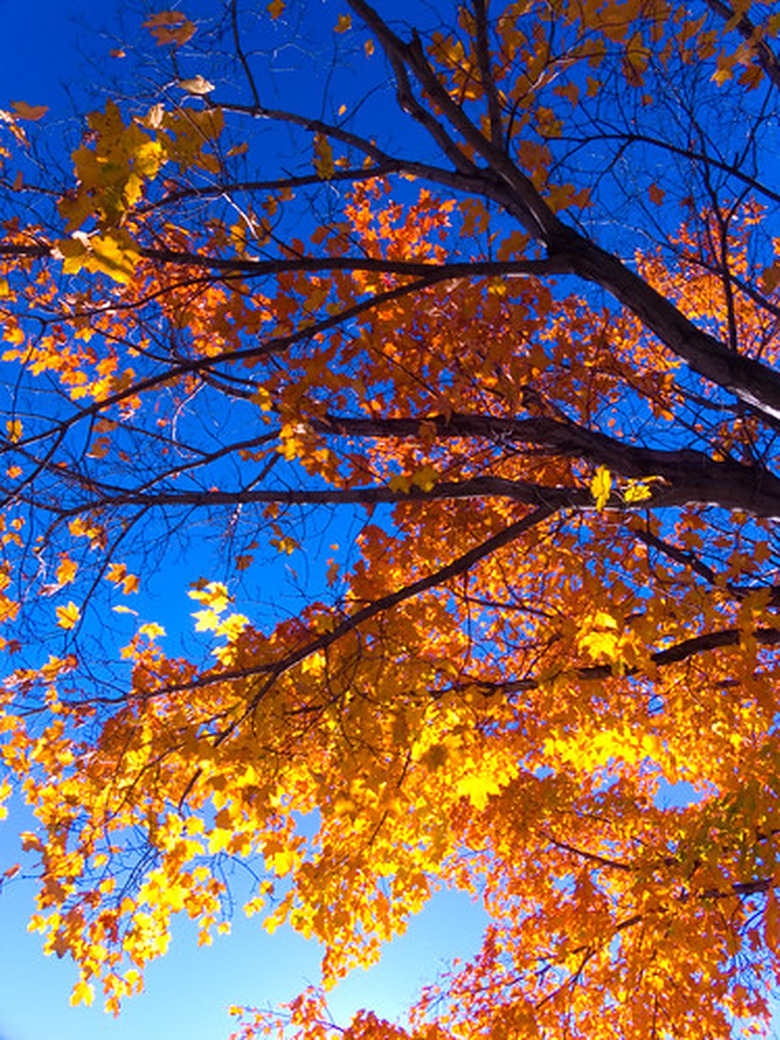What Does A Tulip Tree Look Like?
Tulip tree, Liriodendron tulipifera, is a tall deciduous tree that naturally is found in the woodlands of the southeastern United States. The four-lobed leaves are its distinguishing feature as are the tulip-like orange and pale, yellowish-green flowers that appear in late spring.
Form and Size
The Tulip tree is a large tree with a massive trunk. At maturity it can grow 70 to 100 feet tall with an irregular but architecturally interesting branch structure. Overall the trees are shaped like a rounded pyramid when young and attain an upright, oval shape in the leaf canopy when older.
Foliage
Bright green in color, the leaves of a tulip tree are arranged alternately on the stems and branches. Each leaf blade is 5 to 8 inches long and wide and has four pointed lobes. The leaf has a tulip-like shape in some people's view. In autumn the leaves turn shades of yellow and gold. The foliage is absent in winter.
- Tulip tree, Liriodendron tulipifera, is a tall deciduous tree that naturally is found in the woodlands of the southeastern United States.
- The four-lobed leaves are its distinguishing feature as are the tulip-like orange and pale, yellowish-green flowers that appear in late spring.
Flower
In late spring, branch tips can display small, 2 to 3 inch flowers that resemble tulips. The petals are yellow-green with the flower center orange.
Fruit
The flowers become large, tear-drop shaped fruits at the ends of branches that are yellow-green in color. As the fruits ripen in early autumn, they split open to release seeds. The fruits dry to brown in color and persist on the tree branches after the foliage drops away in autumn.
Bark
The tulip tree's bark on its large trunk is colored light grayish brown. It is corky and is in vertical to slightly wavering vertical furrows. In the bottom of the furrows the bark has an even lighter gray tone.
- In late spring, branch tips can display small, 2 to 3 inch flowers that resemble tulips.
- The fruits dry to brown in color and persist on the tree branches after the foliage drops away in autumn.
Tulip Tree?
The tulip tree is a deciduous tree with a moderate to rapid growth rate. It has a tendency to produce a strong central leader that forms a tall, straight trunk. The tulip tree grows 60 to over 100 feet tall with a spread of about 40 feet. In fall, the leaves of this tree turn a brilliant yellow before dropping. The tulip tree may not produce flowers until it is 15 years old. During periods of establishment and extended drought, the tulip tree requires supplemental irrigation or it will suffer leaf yellowing and premature drop, beginning with foliage on the interior of the canopy.
References
- "A-Z Encyclopedia of Garden Plants"; Edited by Christopher Brickell and H. Marc Cathey; 2004
- University of California Statewide Integrated Pest Management Program: Tulip tree (Yellow poplar)—Liriodendron tulipifera
- North Carolina State University Cooperative Extension Service: Liriodendron tulipifera
- The Ohio State University: Liriodendron tulipifera
